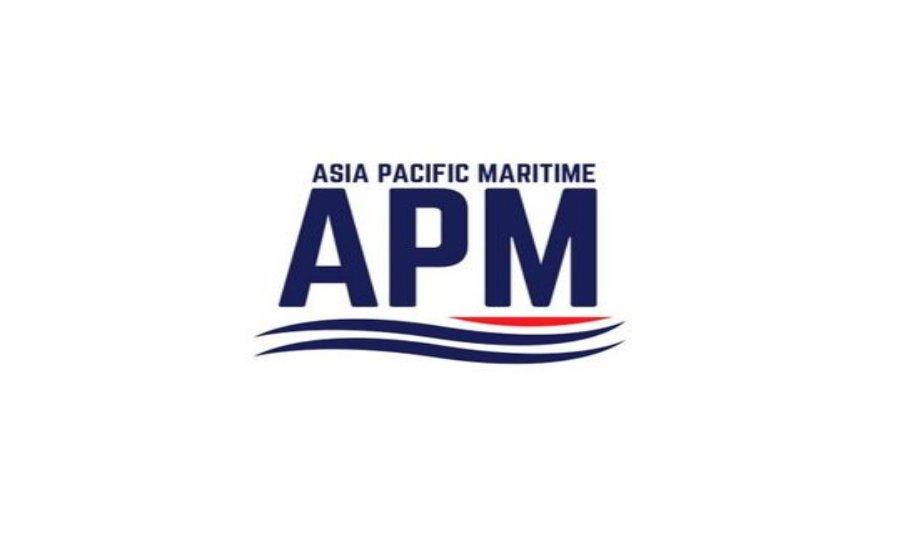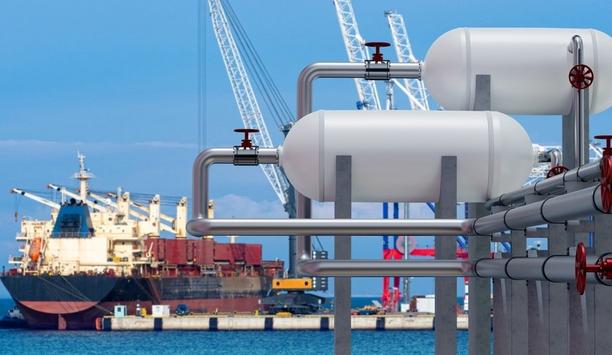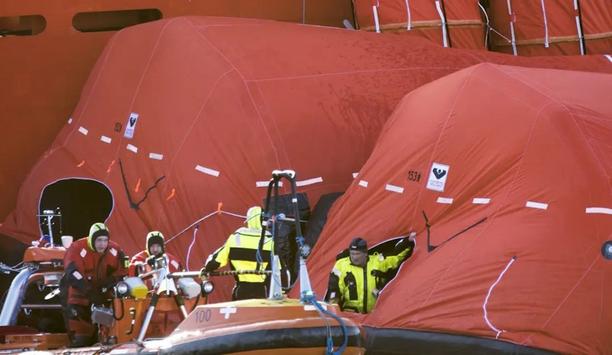The digital evolution is shaping the maritime future in multiple aspects – both onshore and offshore – and shipping organisations are facing pressure to operate more efficiently and profitably while catering to the increasingly sophisticated customer demands.
As with any change, digitalisation was initially met with scepticism. But this has given way to building digital momentum, given the many strategic business benefits to be reaped – from operational efficiency improvements and cost reductions to environmental performance enhancements.
Discussion on key solutions
Asia Pacific Maritime (APM) will return for its 16th edition from 18 to 20 March 2020, with a conference that will gather over 50 industry top minds for a three-day, in-depth discussion on what the maritime industry could look like in 10 years. Key solutions making waves across the industry, including maritime 5G, digitalisation standards, and remote pilotage, will be examined.
Yeow Hui Leng, Group Project Director, Asia Pacific Maritime (APM) said, “Shipping carries around 90% of world trade, making it the blood life of the global economy. Amid challenges posed by shifts in economic activity and tightening regulations, the maritime industry continues to seek means to answer the imperative call to digitalisation.”
“In the face of a changing landscape, APM 2020 will present an opportunity for delegates to glean important insights from industry leaders and explore partnerships to navigate for success.”
APM exhibition
Held in conjunction with the conference is the APM exhibition, one of Asia’s largest marketplace showcasing a complete overview of the vessel sectors. The biennial trade exhibition is expected to host over 1,500 international exhibitors and 15,000 visitors, across six halls spread over two levels.
Digitalisation standardisation for greater collaboration
Standardisation is key to improving data flow and enhancing interoperability and synergy
While automation and other technological innovations can benefit the industry by easing strenuous tasks and streamlining workflow, lack of standardisation remains one hurdle to industry-wide digitalisation. Standardisation is key to improving data flow and enhancing interoperability and synergy.
On this topic, Kenneth Lim, Chief Technology Officer, Maritime and Port Authority of Singapore said, “Digitalisation presents many opportunities and advantages for industry players, but it can only reach its full potential when data flows are seamless."
"As such, MPA has embarked on initiatives such as the ‘digitalOCEANS’ concept to foster Open or Common Exchange And Network Standardisation and allow digital platforms of port authorities, supply chain companies, terminal operators, marine services companies, and ships to interoperate.”
Standardisation of data
Morten Lind-Olsen, Chief Executive Officer, Dualog added, “There is a growing focus on utilisation of consolidated data for both business and compliance purposes. Data needs to be standardised when generated for more efficient collection, processing, and analysis, to deliver the value of timely decision-making.”
“This focus is increasing day by day and certainly requires more digitally integrated ships. The shipping industry has the advantage and tradition of trading within global established regulations and legislations.”
Digitalisation in the maritime industry
Improving efficiency in a digitalised maritime industry is one of the main movements of the APM 2020 conference
Improving efficiency in a digitalised maritime industry is one of the main movements that the APM 2020 conference will deliberate on at the panel session titled “Enabling Digitalisation through Standardisation & Collaboration”, happening during the Leaders’ Forum (18 March 2020).
In addition to Kenneth Lim and Morten Lind-Olsen, panellists for the session include Andre Simha, Global Chief Digital & Information Officer, MSC Mediterranean Shipping Company; Rakesh Rawat, Global Director of ICT Services, OSM and Punit Oza, Vice President, Head of Systems, Processes & Competence – Dry Bulk, Torvald Klaveness.
As the next big leap in mobile and wireless communications, 5G is expected to open up infinite possibilities in maritime communication – for example, the introduction of smart drones for real-time monitoring, ship-shore communication for vessel traffic management and just-in-time operations, autonomous vessels with low latency connectivity for remote operation, the use of Internet-of-Things sensors during search-and-rescue for real-time communications and accurate positioning.
5G enabling infinite communication possibilities
Sharing his thoughts, Kun Yang, Founder, Super Radio AS said, “Autonomous shipping and ocean digitalisation drive the needs of maritime communication. Though currently in its experimental and commercialisation stages, maritime 5G will play an important role for the remote control of autonomous ships in the future.”
Kun Yang is the board chairman and project administrator of “LTE, WIFI and 5G Massive MIMO Communications in Maritime Propagation Environments” (MAMIME), the world’s first maritime 5G communication project that is funded by the Norwegian Research Council.
This project aims to develop optimised LTE and WIFI systems, and research dedicated to 5G solutions for maritime applications. In addition, Super Radio AS is the Pre-5G test solution provider for the small-version Yara-Birkeland autonomous ship, which is regarded as the world’s first fully electric and autonomous container ship.
Digitalisation day
Digitalisation Day (19 March 2020) will feature a session on “Understanding 5G Connectivity and What is Means for Maritime Communications”, where industry experts will examine and discuss the latest developments and potential benefits of 5G for the maritime industry.
Joining Kun Yang on the panel is Jeevarathinam Ravikumar, Vice President Technology & Innovation Global Technology Centre, Lloyd’s Register. (Please refer to Annex A for the list of speakers on Digitalisation Day).
Going beyond the experimental phase
Technology and solutions for autonomous ships and remote control of ship operations have been developed
Unmanned vessels have also been top of mind for shippers. These game-changers could mean that ships can spend much more time at sea than human-controlled ones. Such innovation enables increased productivity, reduces reliance on human resources, and is less prone to human error.
Sanna Sonninen, Pilotage Director of Finnpilot Pilotage, said, “Technology and solutions for commercially viable concepts of autonomous ships and remote control of ship operations have been developed and tested by various organisations."
"Though these are excellent showcases, public sentiment on the autonomous shipping development, the various levels of autonomy or remote operation is often mixed. When trying to find feasible solutions for remote pilotage it is important to understand the difference between an autonomous ship, remotely operated ship and remote piloted ship.”
Remote Pilotage
“To understand how the complex task of piloting a ship could be accomplished without the pilot being physically onboard and operating as a part of the bridge team, one must analyse the different functions of pilotage. Such issues must be solved and analysed before these remote pilotage experiments become a reality.”
Sanna Sonninen will be delivering a presentation on “Developing a Comprehensive Remote and Autonomous Pilotage System” on Innovation Day (20 March 2020).
APM 2020: Future of vessels, solutions for tomorrow
Amid a flurry of discussion on various technological innovations, the APM 2020 exhibition and conference will facilitate connections with decision-makers and industry observers to sharpen understanding about global maritime trends and movements.
Discussions will also deepen at newly introduced roundtable sessions taking place at the APM conference, where industry leaders will lead open dialogues about key issues affecting the maritime sector, such as the implementation of digital solutions and technical innovations.
Another new addition to APM will be speed networking sessions, which are quick 15-minute meet-ups that will foster new relationships between experts and maritime personnel through a structured approach.
Innovation pavilion
The Innovation Pavilion will make its maiden appearance at the exhibition, showcasing fully autonomous vessels, electronic professional certificates, and ships with minimal carbon footprints – solutions that will support delegates in maintaining a competitive edge.
The APM 2020 exhibition and conference will take place from 18 to 20 March 2020, connecting delegates with decision-makers and sharpening industry understanding in Asia. Registration to visit APM Exhibition is free and is open.










